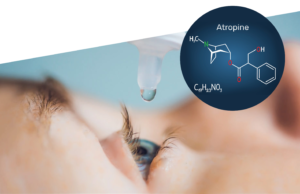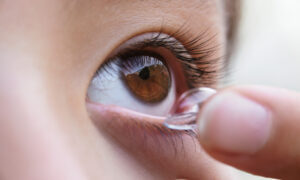[wp_social_sharing social_options=’facebook,twitter,linkedin,’ facebook_text=’Share on Facebook’ twitter_text=’Share on Twitter’ linkedin_text=’Share on Linkedin’ icon_order=’f,t,l’ show_icons=’0′ before_button_text=” text_position=” social_image=”]

A compendium of information
brought to you by Eyenovia
 |
Topical Low-Dose Atropine: A Global Perspective The use of atropine to treat pediatric myopia dates back over 150 years, yet our understanding of its exact mechanism of action remains incomplete. >>READ MORE>> |
 |
One Drop into Each Eye at Bedtime: What Could be Simpler? The use of atropine has been known to slow the progression of myopia for many years.1.2 Initially, approved concentrations of atropine (0.5 percent to 1 percent) were prescribed, resulting in significant and prolonged pupillary mydriasis and accommodative paralysis..2,3,4 >>READ MORE>> |
 |
What is the Optimal Concentration of Topical Low-dose Atropine? Topical low-dose atropine is an emerging therapy for myopia management, but its optimal concentration and long-term efficacy are still not defined. Several well-controlled clinical trials, e.g., ATOM1 and ATOM2, have been published, which studied various concentrations of atropine eye drops. However, none have directly compared the efficacy and safety of multiple low concentrations. >>READ MORE>> |
 |
Recommendations for Tapering Long-term Use of Topical Low-dose Atropine The objective of myopia management is to slow the rate of myopia progression significantly, preferably by 50 percent or more per year.1 That would achieve the goal of substantially reducing the prevalence of high myopia (-5.00D or greater) by up to 90 percent. >>READ MORE>> |
 |
Combination Strategies – What is Their Role in Myopia Management? Myopia, a growing public health concern, has been rising in prevalence with almost 50% of the world’s population estimated to be myopic by the year 20501. >>READ MORE.>> |
 |
Orthokeratology, low-dose atropine and axial elongation Various optical and pharmaceutical approaches have been proposed and shown to have positive results in retarding the progression of myopia. In this retrospective study, the authors investigated if the combination of optical (ortho-k lenses) and pharmaceutical (0.01% atropine) approaches have any benefit over individual treatment paradigms. >>READ MORE>> |
|
Topical Atropine for Myopia Management: The Latest Research A network meta-analysis on myopia control found that use of atropine at different concentrations was significantly superior to other interventions (for example, progressive addition spectacle lenses, multifocal soft contact lenses, orthokeratology, more outdoor activities, etc.)1 Other reviews and meta-analysis similarly concluded that there was less myopic progression with atropine and that both the efficacy and adverse effects were dose-dependent.2, 3 >>READ MORE>>
|







